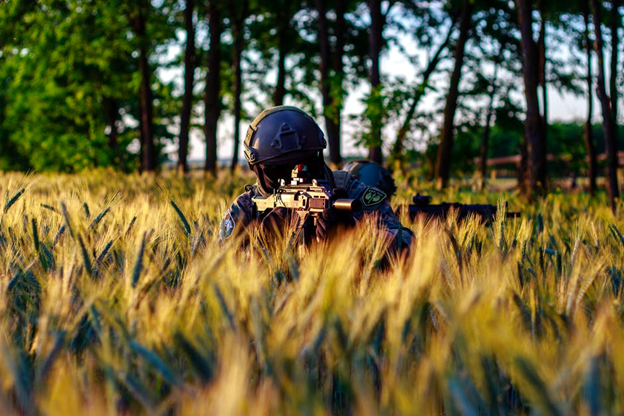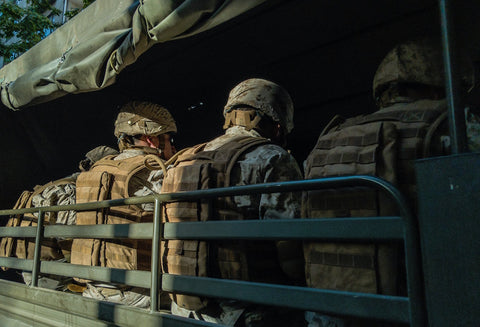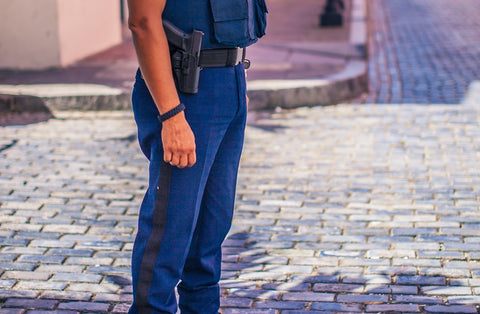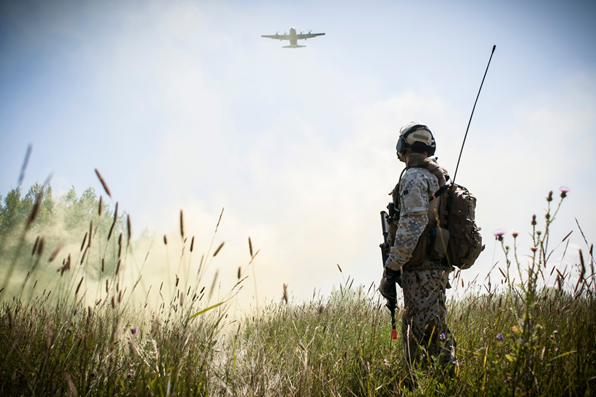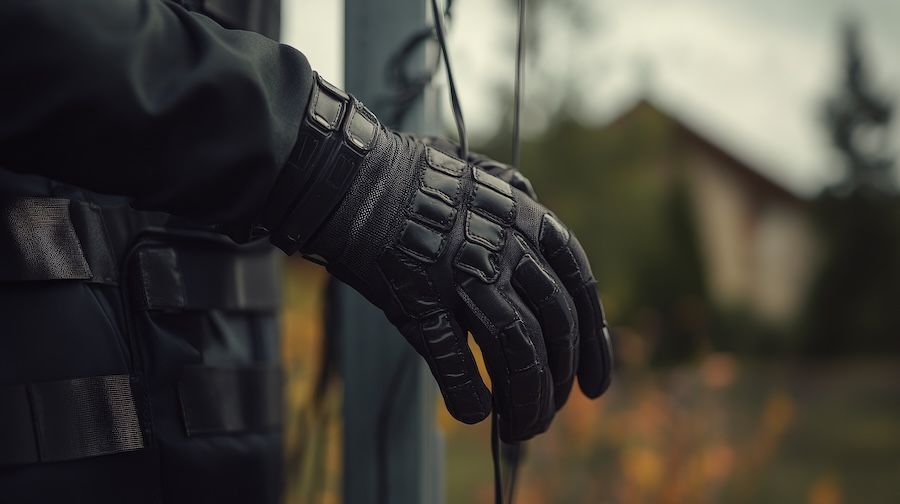The Evolution of Tactical Gear: From Battlefield to Patrol

Tactical gear has come a long way since it was first designed for military use. What began as highly specialized equipment intended for soldiers has expanded into a wide range of products that are now essential for law enforcement officers across the globe.
Over the years, tactical gear has evolved not just in terms of its design, but also in how it is used. Today, it plays a critical role in keeping officers safe while they protect and serve.
With the increasing need for specialized protection and functionality, it’s no surprise that law enforcement agencies now rely on a wide variety of tactical tools. What was once a military-only domain has now become a critical part of police and security operations.
The gear that once served a battlefield has been adapted to meet the unique demands of urban environments, crime prevention, and crowd control. Understanding the journey of tactical gear from its military origins to today’s use in law enforcement will give you a better appreciation of just how far it has come.
The Origins of Tactical Gear: Military Innovations
When you think of tactical gear today, it’s easy to picture body armour, utility vests, and holsters. But these items didn’t simply appear overnight. They were born out of necessity in military settings, where soldiers faced the harsh realities of combat.
During World War I and II, soldiers quickly realized that basic clothing and equipment were insufficient for the demands of battle. The need for durable, practical, and protective gear became clear. This led to the development of items like tactical vests, helmets, and specially designed boots that could withstand the physical demands of war.
One of the key innovations was the utility belt. Soldiers needed a way to carry weapons, ammunition, medical supplies, and tools without being burdened by bulky bags. The solution was a sturdy, easily accessible belt that could hold everything necessary for survival and combat.
As warfare evolved and tactics changed, so did the equipment soldiers used. Tactical vests, which distributed weight more evenly across the body, began replacing traditional backpacks and pouches, allowing for more mobility and flexibility in battle.
These military innovations didn’t stay confined to the battlefield. As the role of law enforcement began to change, especially during times of civil unrest and growing threats of organized crime, many of these military-originated items found their way into police and security operations.
The first bulletproof vests, for example, were adapted from military body armour. As law enforcement began to adopt these military tools, it was clear that some adjustments needed to be made to better suit the needs of patrol officers.
Early Adoption by Law Enforcement: From Combat to Patrol
The shift from military to law enforcement use wasn’t instantaneous. It took time for police forces to understand how best to incorporate military-style gear into their daily operations.
It started with basic items like bulletproof vests and holsters, which were easy to adapt to urban environments. These early adaptations allowed officers to carry their firearms securely while offering a basic level of protection in high-risk situations.
But, as the complexity of law enforcement operations grew, so did the need for more specialized gear.
In the 1980s and 1990s, the rise of organized crime and urban violence made it clear that traditional police gear wasn’t sufficient. As a result, law enforcement agencies began to invest in more tactical equipment, including helmets, armoured vehicles, and enhanced body armour. The growing threat of gang violence and drug-related crimes demanded that officers have the tools to protect themselves and respond effectively to dangerous situations.
This was also when the concept of SWAT (Special Weapons and Tactics) teams took off, with officers receiving more specialized training and equipment for high-risk operations.
The shift in philosophy during this time was profound. No longer was law enforcement gear just about carrying weapons or ensuring officer safety - it had to be more practical and adaptable for the everyday demands of policing. It became clear that comfort, mobility, and accessibility were key to effective policing.
The transition from military-based gear to patrol-oriented gear wasn’t just about improving safety; it was about finding ways to support officers in the diverse situations they face, from routine traffic stops to violent confrontations.
Advancements in Tactical Gear: Materials and Technology
Over time, the materials and technology used in tactical gear have undergone significant advancements. Early tactical gear relied on heavy, cumbersome fabrics and metal components that were functional but far from comfortable.
Today, materials like Kevlar, moisture-wicking fabrics, and lightweight carbon fibre are commonly used for tactical vests, belts, and other essential gear. These innovations have made gear lighter, more durable, and far more comfortable to wear during long shifts or intense situations.
Kevlar, for instance, revolutionized the production of body armour. The fabric is incredibly strong and lightweight, providing vital protection without restricting movement. Today, you’ll see police officers wearing ballistic vests made from a combination of Kevlar and other advanced fibres that are designed to absorb and disperse the energy from bullets and other projectiles.
This type of body armour has made a significant difference in officer safety, with many police departments now requiring officers to wear it during duty hours.
But the advancements don’t stop with materials. Smart technology is also making its way into tactical gear.
Some bodyarmours now come with integrated sensors that monitor an officer’s health and vital signs, alerting commanders to potential issues like stress or injury. Communication systems are also becoming more advanced, with new headsets and helmet-mounted radios that allow officers to stay in constant contact during high-stakes operations.
These smart innovations help officers stay safer, more informed, and better prepared to respond to the dynamic situations they face on the job.
Specialized Gear for Modern Law Enforcement Needs
Today’s law enforcement officers face a variety of challenges, from active shooter situations to large-scale crowd control, and the gear they rely on must be specifically designed to address these unique needs.
The difference between the gear used by regular patrol officers and that used by specialized units like SWAT teams is vast. For example, SWAT teams often wear heavier, more comprehensive body armour, including helmets designed to protect against high-velocity projectiles, while regular patrol officers may wear lighter vests that offer basic protection.
In addition to armour, the weaponry used by tactical units also differs. SWAT officers may carry specialized firearms, like assault rifles or submachine guns, that provide the necessary firepower in a hostage or barricade situation. These weapons are often paired with high-tech optics and accessories, such as night vision scopes, to increase effectiveness in low-light conditions. Regular patrol officers, on the other hand, typically carry sidearms and are trained to use them in more routine encounters.
Another key area of tactical gear is in urban warfare and crowd control. Modern police forces use gear like riot shields, which offer protection against projectiles and allow officers to push back hostile crowds. Non-lethal weapons, such as tasers or beanbag rounds, are also widely used to subdue suspects without causing fatal injuries.
And of course, armoured vehicles, once reserved for military use, are now a critical part of tactical operations in many urban settings, allowing officers to safely approach dangerous situations while providing an added layer of protection.
Adaptation for Changing Threats: Counter-Terrorism and Civil Unrest
The world has changed, and so have the threats facing law enforcement. As terrorism, mass-casualty events, and civil unrest become more prominent, the gear used by law enforcement has had to adapt. The nature of these events often demands specific equipment that wasn’t needed in the past. In response, tactical gear has evolved to meet these emerging threats head-on.
For counter-terrorism operations, protective gear has had to become far more specialized.
Bomb suits, designed to shield officers from explosive devices, are a perfect example of how the demands of modern law enforcement have shaped the gear used today. These suits are bulky but essential, protecting against blasts and shrapnel. They’ve also been designed with mobility in mind, allowing officers to move swiftly despite their heavy gear. Similarly, gas masks and chemical-resistant suits are now standard issue for officers preparing to handle dangerous situations involving hazardous materials or chemical warfare agents.
Civil unrest brings another set of challenges for law enforcement. Riot shields, once simple and basic, have now evolved into more durable, versatile pieces of protective equipment. These shields often come with added features, like transparent sections for better visibility and the ability to withstand direct impacts from projectiles.
The gear used to control large crowds has also seen improvements. Non-lethal weapons, such as tasers and rubber bullets, are frequently employed during riots to subdue individuals without causing permanent harm. These less-lethal options give officers a broader range of responses, reducing the risk of fatal outcomes.
On the global scale, law enforcement around the world has had to respond to terrorism, which has only increased the demand for tactical gear. As terrorist threats become more sophisticated, law enforcement has been forced to incorporate military-grade equipment into its arsenal. This includes high-powered weapons, tactical vehicles, and enhanced protective gear, often making officers feel like they are heading into battle.
With threats constantly shifting, gear manufacturers are continuously improving the functionality and effectiveness of tactical equipment, ensuring that officers have everything they need to deal with a wide variety of dangerous situations.
Integration of Non-Traditional Gear: The Rise of Everyday Carry (EDC)
Oover the years, law enforcement officers have increasingly relied on more non-traditional gear that is just as important in everyday situations. This gear is known as Everyday Carry (EDC), and it’s become a staple for officers looking to add functionality and practicality to their kit.
EDC gear is typically smaller, more compact, and designed to be used in a variety of situations. Items like multitools, flashlights, pocket knives, and tactical pens are now common among officers. These tools are versatile, allowing officers to address a wide range of needs during their daily duties.
A tactical pen, for instance, might serve as a writing instrument during routine paperwork but could also be used as a self-defence tool in an emergency. Similarly, a small flashlight could help illuminate a dark alley while also being used for signalling or even blinding an attacker in a high-stress situation.
The shift towards EDC is more than just about having extra tools on hand. It reflects the evolving nature of modern policing. With increasing demands on officers, there’s a growing need for gear that’s functional both on and off duty. EDC items are easy to carry and don’t weigh officers down, making them an excellent complement to more traditional tactical gear.
As law enforcement continues to face new challenges, having a personal, versatile set of tools allows officers to stay ready for anything that might come their way.
Another major advantage of EDC gear is its ability to blend into day-to-day life. Unlike heavier, more conspicuous gear, items like multitools or compact knives are far less likely to attract unwanted attention. This makes them ideal for officers who need to maintain a low profile but still want to be prepared for any situation.
As a result, EDC has found its place not just in high-risk environments but in regular patrols, where flexibility and quick response times are critical.
The Future of Tactical Gear: What’s Next?
Looking ahead, it’s clear that the future of tactical gear in law enforcement is closely tied to emerging technologies and trends. As threats evolve and the expectations placed on officers grow, innovations in gear are expected to take policing to the next level.
The integration of artificial intelligence (AI) and automation could be a game-changer in the near future. Imagine wearing a helmet that gives real-time data about your surroundings, or having body armour that adapts to the situation, becoming lighter or more protective as needed. These advancements are already being explored and could make officers more efficient and safer in their operations.
Another area where the future of tactical gear is headed is in the realm of robotics and drones. These technologies can already be used in a variety of law enforcement applications, such as surveillance and bomb disposal, and their use is only set to grow.
Drones could be used to scout out dangerous situations from the air, providing officers with valuable intel before they even step onto the scene. Similarly, robots could be deployed in hazardous environments, reducing the need for officers to put themselves in harm’s way. These technologies have the potential to revolutionize the way law enforcement operates, allowing for smarter, safer responses to high-risk situations.
Sustainability is also becoming a key focus when it comes to tactical gear. As environmental concerns continue to rise, there’s increasing pressure to create more eco-friendly gear. Gear manufacturers are exploring new, lighter, more durable and recyclable materials. The goal is to reduce the environmental impact of creating and disposing of tactical equipment while still maintaining the high standards of protection and functionality that officers rely on.
In the coming years, it’s likely that we’ll see even more focus on sustainable practices and materials, helping law enforcement stay ahead of both technological and environmental challenges.
Tactical gear has come a long way since its military beginnings. What started as battlefield necessities has transformed into a crucial part of modern law enforcement operations. Today, officers are equipped with everything from high-tech body armour to practical, everyday tools that help them stay prepared for anything.
As threats evolve, so too does the gear, allowing officers to respond to a variety of situations with more precision and safety than ever before.


